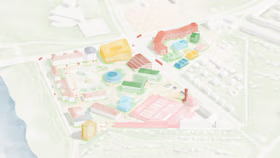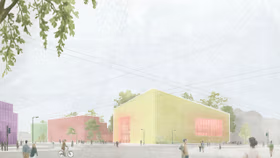Turmschanzenstraße North in Magdeburg
Place of administration, meeting and participation
The new ministry campus in Magdeburg is being created as a forward-looking place for administration, meetings and participation - embedded in a climate-resilient, public open space. The design deliberately focuses on organic forms, user-centered structures and a consistently ecological design: Tiny forests, green roofs and biodiversity-rich meadows make nature a direct experience in an urban context - with ecological and social added value.
Task
Urban design ideas competition
Location
Magdeburg, Germany
Services
Open space planning
Partner
PRSch Architecture
New paths - democratic spatial planning
The landscape architectural approach deliberately breaks with the traditional, orthogonal axis structure. Instead of rigid paths, flowing, organic “Desire Lines” are created - paths that reflect real movement patterns. They lead to where people want to go: to the Elbe, to entrances, to common areas. The result is an open, everyday space that makes democratic values spatially visible.
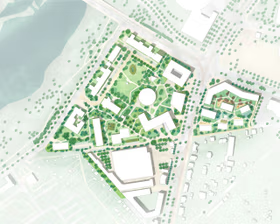
Structure through openness
Despite the organic design language, visual axes and orientation lines are retained. They provide spatial structure, visual connections and targeted pathways - for example to the Alte Elbe, to the planned park bridge or to a new meeting point pavilion.
This creates a landscape order that is both permeable and legible. It follows the topography and movement patterns instead of dictating them.
Open space as a public place and meeting space
The campus is deliberately developed as a publicly accessible park. Individual, purposefully placed solitary buildings activate the generous open spaces and offer a variety of uses: A café kiosk for employees and visitors, a pavilion as a climate information point and a transparent building for cultural events. The clear architectural language enters into an exciting dialog with the openness of the landscape - a visible sign of the interplay between the power of design and the common good.
Nature and democracy
The deliberate juxtaposition of natural growth and architectural order points to the fundamental values of an open society: diversity, openness and participation.
The ecological design of the ministry campus is an expression of a contemporary understanding of democracy - participative, integrative and resilient to the challenges of climate change.
The open, flexible structure of the open space makes it possible to seamlessly integrate key future issues such as biodiversity, sustainable rainwater management and urban cooling into the overall concept. Infiltration-capable surfaces promote the return of rainwater to the natural cycle, specially designed retention zones relieve the burden on the sewage system, and extensive meadows and species-rich wooded areas help to stabilize the microclimate.
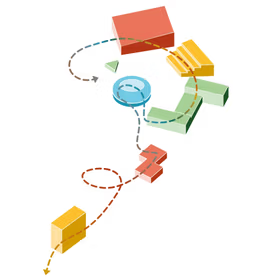
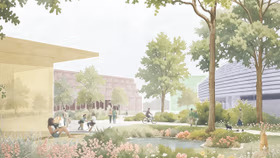
Ecological innovations
The design specifically integrates ecological elements that turn the campus into a climate-active and biodiverse habitat. A so-called Tiny Forest - a dense, species-rich mini forest based on the Miyawaki principle - is being created in the southern area. Its high plant density not only promotes biodiversity, but also has a cooling effect, improves soil quality and provides valuable habitats for insects and birds.
Along the connection to the Alte Elbe, blue-green zones are created in which vegetation, rainwater management and evaporative cooling work together. These multifunctional open spaces improve the urban climate and relieve the burden on the sewage system at the same time.
Extensive green roofs with a high biodiversity are being created on selected new buildings, which store rainwater, contribute to thermal insulation and create retreats for animals. The ecological concept is complemented by vertical greening: In densely built-up areas, they improve the air quality, lower the temperature and create lively, identity-forming façades.
Instead of conventional lawns, species-rich meadows are planted with native plants that bloom all year round. They provide food, protection and habitat for a variety of insects, birds and small animals - and make ecological quality directly visible and tangible in everyday life.


Image credits
All images © ensphere
